#Brundtland
Explore tagged Tumblr posts
Text
The Elders call for an End to the Occupation of Palestine

In line with the ICJ ruling.
#the elders#ban ki moon#mary robinson#gro harlem brundtland#united nations#icj ruling#end the occupation#end the genocide#palestine#palestinians#gaza#genocide#israeli atrocities#israeli apartheid#israeli occupation#war crimes#idf terrorists#iof terrorism#iof war crimes#free palestine#free gaza#justice#civilian deaths#innocent victims#war on children#arrest netanyahu#icc#arms embargo#support for palestine#support for gaza
14 notes
·
View notes
Text

#GAWD they're hot#they keep posting new pics too#and I am the happiest sopp fangirl in the world#Röyksopp#Svein Berge#Torbjørn Brundtland
5 notes
·
View notes
Text
Röyksopp – Terminal 5 – October 1, 2023

Back in North America for the first time in six years, Norwegian duo Röyksopp’s True Electric Tour brought them to Terminal 5 on Sunday to close out their tour (and kick off October) with a night of chilled-out atmospheric sounds and lively electronic music.




















Photos courtesy of Toby Tenenbaum | @TobyTenenbaum
#Bowery Presents#Live Music#Music#New York City#Photos#Röyksopp#Svein Berge#Terminal 5#Toby Tenenbaum#Torbjørn Brundtland
1 note
·
View note
Text
@the-rainbow-of-doom tagged me to share my five favourite songs.
It’s an impossible task and would change moment by moment so instead here’s whatever I chose right now:
Pretty Girl hi! - UMI
Fear of the Unknown and the Blazing Sun - Colin Stetson
Geared Up - Brundtland And Pehrson
M.E. - Gary Numan
Broken Horses - Brandi Carlile
Passin' Me By - The Pharcyde
I use Apple Music, but I looked up links for Spotify because I think more people use that (?) i updated to YouTube 🫡
Alright then, ltag @omruc @catboy-waluigi @comma-lachlan @cytharatunes @courantdeconscience @cool-rainy-autumn if you want to share some music or not 🎶

9 notes
·
View notes
Text
























World Oceans Day
With oceans making up 66% of our Earth, it’s crucial we raise awareness about and tackle the threats facing these life-giving and life-containing bodies of water.
66% of the world is covered in a blanket of rich, vibrant blue, from its depths once came all life on the Earth, and it continues to house an immense amount of life. This blanket is the world’s oceans, and they serve as one of the most popular vacation spots in the world and play a vital role in the economy of countries worldwide. Across the briny deep massive amounts of cargo cross each year, and it still serves as the primary thoroughfare for trade. World Oceans Day celebrates the ocean and the important role it plays in our lives.
It’s a time for supporters of the oceans to focus on conversation and sustainability so that they can remain clean and usable. The animals deserve a happy and safe place to roam and live without having to worry about any destruction or man-made obstacles. It’s important to safeguard the oceans to help ensure a healthy home for all. One this day, people can come together to create a space for all to enjoy and appreciate, no matter where each person lives.
History of World Oceans Day
In 2008, the UN gathered and uniformly created World Oceans Day. It was first proposed in 1992 in Rio de Janeiro during the Earth Summit. The ocean has been an incredibly important part of human history, and this special was established with the intent of celebrating our connection to the sea and raising awareness about the various dangers it faces. There are nearly 200,000 identified species that live in the ocean, but the number of actual species that reside there is likely in the millions. It’s essential to ensure that they don’t have to worry about freely getting around and enjoying a healthy and safe home to reside.
Even with that being the case, there are still problems with overfishing, and the subsidies that are given for fishing in countries all around the world are causing depletion of the game species. These activities have led to efforts to restore the fishing industry being undermined, and the industry bringing in $50 billion a year less. It’s just one of the many factors that should have us all celebrating World Oceans Day and raising awareness about all the issues our big blue’s face.
There’s a global environmental catastrophe due to decades of overuse and a surge in single-use plastics. Plastic straws and bags are getting into the oceans and causing havoc. World Oceans Day is an opportunity to acknowledge and recognize the efforts that have been and are being made against plastic pollution. It’s enlightening and disheartening to know that today, 13,000,000 tons of plastic leaks into the ocean every year, which among other damage, kill 100,000 marine animals annually.
World Oceans Day Timeline
1987 Brundtland Report
This report, connected to The World Commission on Environment and Development (Brundtland Commission) notes that the ocean sector is lacking representation compared to other sectors.
1992 Earth Summit in Rio de Janeiro
Created as a way to celebrate the world’s shared ocean and raise awareness for the personal connection between humans and the ocean. This is where the concept for World Oceans Day was first proposed by the Canadian representatives.
2008 UN declares to recognize World Oceans Day
This year, after a four-year onsite and online petition drive, the UN General Assembly passes a Declaration that will officially recognize the day, beginning the following year.
2009 First World Oceans Day is celebrated
The inaugural World Oceans Day is observed with the theme “Our Oceans, Our Responsibilities.”
2016 World Oceans Day Youth Advisory Council is launched
Made up of 25 youth from all over the world, the Youth Advisory Council is created to develop and promote World Oceans Day.[5]
Why celebrate World Oceans Day?
It’s a good reminder to bring attention to the fact that oceans play a major role in everyday life all around the globe. The oceans provide a majority of the oxygen we breathe, so many consider them to be the lungs of our planet. The goal is to develop a worldwide movement of citizens to care better for the oceans. It’s an opportunity to inform and educate humans and the public of what our actions are doing to the ocean and what impact they have in the long run. It’s not only a day to celebrate the beauty, wealth, and promise of the ocean, but a chance to realize that they’re a critical part of the biosphere. They’re a significant source of food and medicines and simply can’t be ignored or mistreated any longer.
How to celebrate World Oceans Day
Start it off by a visit to the nearest ocean to restore a personal connection to the sea. Breathe deep and appreciate the beauty and serenity the ocean offers each day of the week. Invite family along, and while there, bring information about the ocean and what people really need to know about it to make visiting it a joy for years to come.
Pick a day to go to the ocean to clean up and help restore it instead of simply sitting by it. Gather friends and family and pitch in and pick up trash that surrounds the local beaches and oceans in the area. It’ll not only look nicer, but the wildlife in the area will benefit from these actions as well. Avoid single-use plastics, and instead pack a picnic lunch with reusable containers to enjoy after the hard work is complete. One may also consider organizing a fundraiser to aid preservation and restoration efforts at the local beach. With all the plastic waste coming off our beaches thanks to careless beach-goers, our ocean is awash with litter.
Use this as a time to increase one’s knowledge and explore the topic further. There are a variety of books and resources out there to help a person achieve this goal. Another idea is to gather a group of people and watch an ocean film on the topic to bring awareness to the concept of helping out the oceans.
There are plenty of activities and events that occur on World Oceans Day. Celebrate by choosing one or two to participate in and enjoy. Engage in the day’s events by piggybacking off of other ideas that people in the area have come up with instead of having to think of activities alone.
Source
#Vancouver#Burrard Inlet#Big Sur#Morro Bay#playa de las Catedrales#Albufeira#Atlantic Ocean#Spain#Portugal#travel#Miami Beach#Daytona Beach#seascape#landscape#original photography#World Oceans Day#WorldOceansDay#8 June#tourist attraction#USA#St. John's#Acadia National Park#Canada#Kalaloch Beach#Washington#Bandon#Oregon#Pacific Northwest#Point Arena Lighthouse#vacation
5 notes
·
View notes
Note
So you’re just anti-everyone-currently-alive. We deserve to die and rot because we can’t live in a perfect enough way, because trying to make parts of our live better has consequences for the world, and that’s unacceptable. Can’t try to mitigate problems, can’t try to make things better, just die and rot.
look, i think that is a really disingenuous way of interpreting my pro-decay stance. i'm very much pro-everyone-currently-alive. im just a brundtland report boy - meeting the needs of the present without compromising the ability of future generations to meet their own needs. this involves after a long and fruitful most beautiful life which i want and strive for for absolutely anyone on earth we and our structures decay and return into the life cycle to feed the next generation. we owe that to the future, and i see decomposition as a joyful and grateful experience, not as a punishment. that was the point if my post - in the name of intergenerational equality, i want us to rot. after a long and peaceful life!
of course, intergenerational equality can never work without intragenerarional equality, and the safety and happiness of everyone on earth outweighs such theoretical considerations of the future, at least in my mind. I simply think that in our development, we need to learn to hold back with things that might negatively impact the future, and that involves questioning our desire for permanence and its negative consequences. i urge for caution, but never for punishment.
44 notes
·
View notes
Text

Former Prime Minister Gro Harlem Brundtland of Norway

Former President Megawati Soekarnoputri of Indonesia

Former Deputy Prime Minister Wan Azizah Wan Ismail of Malaysia

Former Prime Minister Helle Thorning-Schmidt of Denmark
#fandom#fandom questions#character quiz#quizzes#rounds#politicians#politics#lolitics#malaysian politics#asian politics#indonesian politics#european politics#helle thorning-schmidt#megawati soekarnoputri#wan azizah wan ismail#world leaders
3 notes
·
View notes
Text
The impact of Education on Sustainable Development.
youtube
Sustainable development has become a buzzword in recent years, and for a good reason. As our world grapples with environmental, social, and economic challenges, the concept of sustainable development offers a promising path towards a brighter and more equitable future. In this blog, we'll explore what sustainable development is, why it's essential, and how individuals, communities, and governments can contribute to this transformative journey.
Understanding Sustainable Development:
youtube
Sustainable development is a holistic approach to improving our quality of life while preserving the planet's resources for future generations. It's about finding a balance between economic growth, social progress, and environmental protection. The term was popularized in 1987 by the Brundtland Commission, which defined it as "development that meets the needs of the present without compromising the ability of future generations to meet their own needs."
Key Principles of Sustainable Development:
youtube
Environmental Stewardship: Preserving and restoring the natural environment, reducing pollution, and conserving biodiversity are essential components of sustainable development.
Social Equity: Sustainable development promotes inclusive growth, ensuring that everyone has access to basic needs such as clean water, food, education, and healthcare.
Economic Prosperity: While protecting the environment and promoting social equity, sustainable development also aims to foster economic growth and create opportunities for all.
The Importance of Sustainable Development:
Environmental Preservation: As climate change, pollution, and habitat destruction threaten our planet's health, sustainable development offers a roadmap to mitigate these issues.
Social Inclusion: It seeks to reduce inequality and ensure that no one is left behind, addressing poverty and improving access to education and healthcare.
Economic Stability: By encouraging responsible economic practices, sustainable development helps create long-term economic stability, reducing the risk of financial crises.
How to Contribute to Sustainable Development:
youtube
Reduce, Reuse, Recycle: Small everyday actions, like reducing waste and conserving resources, can have a big impact.
Support Sustainable Businesses: Choose products and services from companies committed to environmentally and socially responsible practices.
Advocate for Change: Raise awareness and demand policy changes that promote sustainable development at the local, national, and global levels.
Invest in Renewable Energy: Support the transition to clean, renewable energy sources to reduce greenhouse gas emissions.
Community Engagement: Get involved in local initiatives, volunteer, and work with your community to address sustainability issues.
Sustainable development is not just a buzzword; it's a call to action. It represents a vision for a better, more equitable, and environmentally responsible future. By understanding its principles and taking small, everyday actions, we can all contribute to this important global effort. Sustainable development isn't just a goal; it's a journey, and we must all be willing travelers on this path towards a brighter future.
Key Aspects of Sustainable Development:
Energy Transition: Sustainable development encourages the transition from fossil fuels to renewable energy sources like solar, wind, and hydroelectric power. This shift not only reduces carbon emissions but also creates jobs in the green energy sector.
youtube
Responsible Consumption: Reduce your ecological for being mindful of what you consume. Buy locally-produced goods to support the community and reduce the carbon footprint associated with transportation. Embrace the "circular economy" concept by repairing and reusing items when possible.
youtube
Eco-friendly Transportation: Opt for public transportation, carpooling, biking, or walking when possible to reduce your carbon emissions. Electric and hybrid vehicles are also more eco-friendly alternatives.
youtube
Conservation of Ecosystems: Support and participate in conservation efforts in your area. Protecting and restoring natural ecosystems, including forests, wetlands, and marine environments, is crucial for biodiversity and climate mitigation.
youtube
More Ways to Contribute to Sustainable Development:
youtube
Education and Awareness: Stay informed about sustainability issues and share this knowledge with others. Organize workshops, seminars, or awareness campaigns in your community to educate people about the importance of sustainable living.
Green Building and Sustainable Architecture: Encourage or adopt green building practices, which use energy-efficient designs and materials. Sustainable architecture can significantly reduce energy consumption and the environmental impact of construction.
Waste Management: Practice responsible waste management by composting organic waste and recycling. Encourage local authorities to improve recycling programs and reduce single-use plastics.
Water Conservation: Conserve water by fixing leaks, using water-saving appliances, and adopting practices like rainwater harvesting. Promote efficient water use in your community and support policies for responsible water management.
Advocacy and Activism: Join or support organizations and movements advocating for sustainable policies and practices. Lobby for sustainable development in your region and at higher government levels.
youtube
Sustainable development is a multifaceted and ongoing journey. By focusing on the key aspects of sustainable development and incorporating these additional strategies into your lifestyle and advocacy efforts, you can make a meaningful contribution towards building a more resilient, equitable, and environmentally responsible world. Remember, every small action counts, and collectively, we can bring about transformative change for a sustainable
2 notes
·
View notes
Link
0 notes
Text
🌱Sustainable Living: Practical Tips for Adopting Eco-Friendly Habits🚴

🌍 Introduction
Sustainable living isn't just a trend; it's a necessity in our fast-paced, resource-consuming world. With climate change becoming a pressing issue, adopting eco-friendly habits has never been more crucial. This article provides practical tips for embracing sustainable living, backed by the latest data, historical context, and actionable solutions to overcome challenges. Let’s dive into how we can make a positive impact on the planet.
#SustainableLiving #EcoFriendly #ClimateAction #GoGreen #Sustainability
🛠️ 1. Understanding the Need for Sustainable Living
Historical Context: The concept of sustainability dates back to the early 20th century, but it gained momentum during the environmental movements of the 1960s and 70s. The 1987 Brundtland Report defined sustainable development as meeting the needs of the present without compromising the ability of future generations to meet their own needs.
Current Situation: In 2023, global CO2 emissions hit a record high of 40.6 billion tonnes. The Earth Overshoot Day, the date when humanity's demand for ecological resources exceeds what the Earth can regenerate in that year, occurred on July 28, 2023. This highlights the urgent need for sustainable living practices.
#ClimateChange #GlobalWarming #CO2Emissions
🔍 2. Key Factors Driving Sustainable Living
Environmental Degradation: Deforestation, pollution, and loss of biodiversity are critical issues.
Resource Depletion: Overuse of natural resources like water, fossil fuels, and minerals is unsustainable.
Climate Change: Increasing global temperatures and extreme weather events are direct results of unsustainable practices.
Health Concerns: Pollution and environmental toxins are linked to various health problems, driving people towards greener lifestyles.
#Biodiversity #Deforestation #ResourceDepletion #HealthAndEnvironment
📊 3. Challenges in Adopting Sustainable Habits
Awareness Gap: Many people lack knowledge about sustainable practices.
Economic Barriers: Eco-friendly products often come with higher upfront costs.
Habitual Resistance: Breaking old, unsustainable habits can be difficult.
Infrastructure Limitations: Lack of access to sustainable options like public transportation or recycling facilities.
Data Insight:��According to a 2023 study by the World Resources Institute, 65% of consumers in developed countries are willing to adopt sustainable habits, but only 26% actually do so, primarily due to economic and infrastructural barriers.
#SustainabilityChallenges #EcoAwareness #GreenEconomy
💡 4. Practical Tips for Sustainable Living
Reduce, Reuse, Recycle: Start by reducing waste. Reuse what you can and recycle properly. Simple steps like avoiding single-use plastics can make a big difference.
Energy Efficiency: Switch to energy-efficient appliances and LED bulbs. Consider solar panels for renewable energy.
Sustainable Transportation: Use public transportation, carpool, or opt for biking and walking. Electric vehicles (EVs) are also a greener alternative.
Conscious Consumption: Buy local, organic, and seasonal food. Reduce meat consumption, as the meat industry is a significant contributor to greenhouse gas emissions.
Water Conservation: Install water-saving fixtures and practice mindful water usage, like turning off the tap while brushing your teeth.
#GreenLiving #EnergyEfficiency #ZeroWaste #ConsciousConsumption #WaterConservation
🔄 5. Overcoming Challenges: Solutions for Sustainable Living
Education and Awareness: Governments and NGOs should focus on educating the public about the importance and methods of sustainable living.
Incentives for Green Choices: Providing financial incentives for using renewable energy or purchasing eco-friendly products can encourage more people to go green.
Community Initiatives: Local communities can promote sustainability by organizing events like clean-up drives and eco-workshops.
Policy Support: Governments need to enforce regulations that promote sustainability, such as carbon taxes and bans on single-use plastics.
Case Study: Sweden has implemented a carbon tax since 1991, leading to a significant reduction in carbon emissions. As a result, the country is on track to achieve net-zero emissions by 2045.
#EcoEducation #GreenIncentives #CommunitySustainability #PolicyForChange
🚀 6. The Way Forward: Building a Sustainable Future
To build a sustainable future, it's essential to take collective action. Individuals, communities, businesses, and governments must work together to adopt and promote eco-friendly practices. The shift towards sustainability is not just a choice but a responsibility we owe to future generations.
Action Steps:
Support Green Businesses: Choose products from companies that prioritize sustainability.
Advocate for Policy Changes: Participate in campaigns and vote for leaders committed to environmental policies.
Lead by Example: Adopt sustainable habits in your own life and inspire others to follow.
#FutureOfSustainability #CollectiveAction #GreenLeadership
📚 References and Sources
World Resources Institute (2023) - Sustainable Living Study
UN Environment Programme (2023) - Global CO2 Emissions Report
Swedish Carbon Tax Success Story - Government of Sweden
Earth Overshoot Day (2023) - Global Footprint Network
🌟 Conclusion
Sustainable living is about making conscious choices that benefit both the planet and our well-being. By understanding the importance, overcoming challenges, and adopting practical tips, we can all contribute to a greener, healthier world. Start small, stay consistent, and watch the impact grow!
#SustainableFuture #EcoFriendlyHabits #ClimateActionNow #SustainabilityJourney
Disclaimer: This content is accurate and true to the best of the author’s knowledge and is not meant to substitute for formal and individualized advice from a qualified professional.
© 2024 ANUJ VIJLANI
1 note
·
View note
Text
Las dimensiones de la sustentabilidad

El concepto de sustentabilidad se funda en el reconocimiento de los límites y potenciales de la naturaleza, así como la complejidad ambiental, inspirando una nueva comprensión del mundo para enfrentar los desafíos de la humanidad en el tercer milenio. El concepto de sustentabilidad promueve una nueva alianza naturaleza-cultura fundando una nueva economía, reorientando los potenciales de la ciencia y la tecnología, y construyendo una nueva cultura política fundada en una ética de la sustentabilidad –en valores, creencias, sentimientos y saberes– que renuevan los sentidos existenciales, los mundos de vida y las formas de habitar el planeta Tierra.
La sustentabilidad en clave temporal
La aparición y difusión del término desarrollo sostenible o sustentable ha acompañado al proceso de concientización ambiental de la sociedad global. Inicialmente este concepto se relacionaba –aún con contradicciones-, con el crecimiento económico, pues no se consideraba en profundidad los objetivos de mantenimiento de las bases naturales del ambiente y los procesos de deterioro de los recursos naturales en las distintas escalas geográficas. Recién hacia finales de los años sesenta y principios de los setenta que la crisis ambiental planetaria comienza a tener consideración en los foros mundiales tanto gubernamentales como no gubernamentales. El debate medio ambiente – desarrollo, suscitado en esos momentos-, reveló que los problemas ambientales se manifiestan de manera distinta según se trate de países desarrollados o de países en desarrollo. A grandes rasgos es posible señalar que los primeros sobreutilizan los recursos naturales, mientras los segundos los subutilizan; si bien en la actual era de la globalización, además, los países desarrollados sobreutlizan los recursos del resto de los países a través de la apertura del comercio internacional y el deterioro de los términos de intercambio y el peso impuesto por las deudas externas. En definitiva, los países desarrollados han sido los focos originarios de los problemas ambientales que se “exportaron” a las áreas de concentración urbano-industrial de los países en desarrollo. La noción moderna de desarrollo sustentable tiene su origen en el debate iniciado en 1972 en Estocolmo(2) y consolidado veinte años más tarde en Rio de Janeiro. El término desarrollo sustentable aparece con la Estrategia Mundial de Conservación(3) de 1980, que fue el aporte más conocido al problema de las interrelaciones entre la naturaleza y la sociedad. A pesar de la variedad de interpretaciones existentes en el discurso político y los debates académicos, se adoptó internacionalmente la definición sugerida por la Comisión Mundial sobre Medio Ambiente y Desarrollo, presidida por la entonces Primera Ministra de Noruega, Gro Brundtland en 1987. La definición más repetida y difundida sobre el concepto es que el desarrollo sustentable es aquél que “es capaz de cubrir las necesidades del presente sin comprometer las posibilidades de las futuras generaciones para satisfacer sus propias necesidades” (CMMAD, 1992). Esta definición de sustentabilidad incluye dos ideas clave: - La “necesidad” de considerar a las generaciones presentes y futuras en tal conceptualización, y - la “limitación” impuesta al ambiente por el estado de la tecnología y la organización social en cada contexto histórico-geográfico. En realidad, el discurso sobre la sustentabilidad fue una respuesta a la escuela de los límites del crecimiento, que desde los años setenta venía postulando la inexorable presión del crecimiento económico sobre la naturaleza. Frente a esta visión catastrofista, el enfoque de la sustentabilidad es más flexible, al señalar que los daños ecológicos ocurren cotidianamente, de una manera gradual y sobre unas tasas o límites ambientales variables. Un resultado institucional importante de CNUMAD fue la creación de la Comisión sobre el Desarrollo Sostenible (CDS) en diciembre de 1992 para asegurar un seguimiento efectivo de CNUMAD y para controlar e informar acerca de la ejecución de los acuerdos de la Cumbre para la Tierra a escala local, nacional, regional e internacional. La Cumbre Mundial sobre el Desarrollo Sostenible realizada en Johannesburgo en 2002 marca el cierre de este ciclo centrándose en el multilateralismo como una estrategia clave para el cumplimiento y la aplicación del desarrollo sustentable. Es así como estas cumbres sirvieron de plataforma para incorporar la idea del desarrollo sustentable en los planes de acción local, regional y global(4) . El concepto de sustentabilidad En este acápite adoptaremos una conceptualización de sustentabilidad operativa para la mejor comprensión de su complejidad y en vistas de la necesidad de superar ciertas nociones relacionadas con el crecimiento económico basadas en el neoliberalismo. El concepto de sustentabilidad se funda en el reconocimiento de los límites y potenciales de la naturaleza, así como la complejidad ambiental, inspirando una nueva comprensión del mundo para enfrentar los desafíos de la humanidad en el tercer milenio. El concepto de sustentabilidad promueve una nueva alianza naturaleza-cultura fundando una nueva economía, reorientando los potenciales de la ciencia y la tecnología, y construyendo una nueva cultura política fundada en una ética de la sustentabilidad –en valores, creencias, sentimientos y saberes– que renuevan los sentidos existenciales, los mundos de vida y las formas de habitar el planeta Tierra.(5)
La sustentabilidad presenta diversas dimensiones dada su complejidad
Para definir cabalmente la sustentabilidad es necesario considerar todas sus dimensiones de manera articulada, dado que en caso contrario, se cae en reduccionismos inconducentes. En tal sentido, en este módulo daremos cuenta, entre otras dimensiones, de: • La sustentabilidad ecológica o ambiental que exige que el desarrollo sea compatible con el mantenimiento de los procesos ecológicos, la diversidad biológica y la base de los recursos naturales. • La sustentabilidad social que requiere que el desarrollo aspire a fortalecer la identidad de las comunidades y a lograr el equilibrio demográfico y la erradicación de la pobreza. • La sustentabilidad económica que demanda un desarrollo económicamente eficiente y equitativo dentro y entre las generaciones presentes y futuras. • La sustentabilidad geográfica que requiere valorar la dimensión territorial de los distintos ambientes. Se trata de una nueva perspectiva o dimensión ya que a pesar de que existe consenso, en los foros internacionales, sobre la importancia y dimensiones de este concepto; la realidad es que su aplicación en distintas escalas geográficas, especialmente en las escalas nacional, regional y local es todavía muy incipiente. Además, existe una subvaloración de la dimensión territorial que puede traer consecuencias negativas en la planificación del desarrollo sostenible. Por lo demás, también se considera la sustentabilidad cultural, política y la dimensión educativa para completar el carácter complejo que abarca este concepto. La dimensión ecológica o ambiental La dimensión ecológica de la sustentabilidad promueve la protección de los recursos naturales necesarios para la seguridad alimentaria y energética y, al mismo tiempo, comprende el requerimiento de la expansión de la producción para satisfacer a las poblaciones en crecimiento demográfico. Se intenta así superar la dicotomía medio ambiente-desarrollo, aspecto nada sencillo a juzgar por los impactos ambientales de los modelos económicos neoliberales vigentes en el mundo contemporáneo. La dimensión ecológica de la sustentabilidad está condicionada por la provisión de recursos naturales y de servicios ambientales de un espacio geográfico. Es posible advertir que si bien la abundancia de recursos naturales no garantiza el carácter endógeno del desarrollo sustentable, como lo demuestra la circunstancia de tantos países subdesarrollados que poseen una importante dotación de recursos hídricos, minerales o energéticos; no hay duda que constituye el potencial básico del desarrollo territorial. Es fundamental incorporar la dimensión ecológica en la toma de decisiones políticas y, asimismo, es necesario examinar las consecuencias ambientales de la apropiación de los recursos naturales que cada sociedad promueve en las distintas etapas históricas. La sustentabilidad ecológica se refiere a la relación con la capacidad de carga de los ecosistemas, es decir, a la magnitud de la naturaleza para absorber y recomponerse de las influencias antrópicas. La capacidad de carga es el máximo número de personas que pueden ser soportadas por los recursos de un territorio y se define normalmente en relación a la máxima población sustentable, al mínimo nivel de vida imprescindible para la supervivencia. El concepto de capacidad de carga permite evaluar los límites máximos del crecimiento de la población según diversos niveles tecnológicos(6) . La capacidad de carga puede tener también varios significados. Cuando se trata de recursos renovables (reservas de aguas subterráneas, árboles y vegetales diversos, peces y otros animales) este concepto se refiere al rendimiento máximo que se puede obtener indefinidamente sin poner en peligro el capital futuro de cada recurso. En el caso de la contaminación (vertidos líquidos y gaseosos en ríos, lagos, océanos y en la atmósfera) la capacidad de carga se refiere a las cantidades de productos contaminantes que estos receptores pueden absorber antes de ser irremediablemente alterados.(7) Para el caso de los recursos naturales renovables, la tasa de utilización debiera ser equivalente a la tasa de recomposición del recurso. Para los recursos naturales no renovables, la tasa de utilización debe equivaler a la tasa de sustitución del recurso en el proceso productivo, por el período de tiempo previsto para su agotamiento (medido por las reservas actuales y por la tasa de utilización). Si se toma en cuenta que su propio carácter de “no renovable” impide un uso indefinidamente sustentable, hay que limitar el ritmo de utilización del recurso al período estimado para la aparición de nuevos sustitutos. Esto requiere, entre otros aspectos, que las inversiones realizadas para la explotación de recursos naturales no renovables, a fin de resultar sustentables, deben ser proporcionales a las inversiones asignadas para la búsqueda de sustitutos, en particular las inversiones en ciencia y tecnología(8) . La dimensión social Sabido es que el origen de los problemas ambientales guarda una relación estrecha con los estilos de desarrollo de las sociedades desarrolladas y subdesarrolladas. Mientras en las primeras el sobreconsumo provoca insustentabilidad, en las segundas es la pobreza la causa primaria de la subutilización de los recursos naturales y de situaciones de ausencia de cobertura de las necesidades básicas que dan lugar a problemas como la deforestación, la contaminación o la erosión de los suelos. En relación con la sustentabilidad social, debemos tener en cuenta que ella implica promover un nuevo estilo de desarrollo que favorezca el acceso y uso de los recursos naturales y la preservación de la biodiversidad y que sea “socialmente sustentable en la reducción de la pobreza y de las desigualdades sociales y promueva la justicia y la equidad; que sea culturalmente sustentable en la conservación del sistema de valores, prácticas y símbolos de identidad que, pese a su evolución y reactualización permanente, determinan la integración nacional a través de los tiempos; y que sea políticamente sustentable al profundizar la democracia y garantizar el acceso y la participación de todos en la toma de decisiones públicas. Este nuevo estilo de desarrollo tiene como norte una nueva ética del desarrollo, una ética en la cual los objetivos económicos del progreso estén subordinados a las leyes de funcionamiento de los sistemas naturales y a los criterios de respeto a la dignidad humana y de mejoría de la calidad de vida de las personas”(9) . En relación con estas apreciaciones de Guimarães, la dimensión aludida se relaciona estrechamente, además, con los aspectos culturales y políticos de las sociedades. Pero no sólo la sustentabilidad deberá promover cambios cualitativos en el bienestar de las sociedades y afianzar el equilibrio ambiental planetario, sino que deberá considerar la dimensión social en su más profundo sentido. Esto se comprende si se expresa que es natural que un ser humano en situación de extrema pobreza, exclusión o marginalidad no pueda tener un compromiso estrecho con la sustentabilidad. Por ejemplo, no se le podrá pedir a quienes no tienen leña para calefaccionar sus hogares que no talen de manera desmedida los árboles cercanos a sus casas o sobreconsuman las especies y sobrepastoreen los suelos con sus ganados. En sentido contrario, en situaciones de riqueza, las poblaciones tienden al sobreconsumo y, por lo tanto, tampoco se comprometerán con la sustentabilidad, hecho que es notorio en las grandes ciudades, en las que la cultura del shopping, la comida chatarra, el gasto exagerado de energía y agua es moneda corriente. En términos de la relación entre estos dos extremos de la sociedad, no hay duda que la inserción privilegiada de unos –los ricos-, en el proceso de acumulación, y por ende en el acceso y uso de los recursos y servicios de la naturaleza, les permite transferir a los otros –los pobres-, los costos sociales y ambientales de la insustentabilidad a los sectores subordinados o excluidos. Ello implica, especialmente en los países periféricos, con graves problemas de pobreza, desigualdad y exclusión, que los fundamentos sociales de la sustentabilidad suponen postular como criterios básicos de política pública los de la justicia distributiva, para el caso de bienes y de servicios, y los de la universalización de cobertura, para las políticas globales de educación, salud, vivienda y seguridad social(10) . Guimarães también aporta el concepto de actores sociales de la sustentabilidad al referirse a los componentes básicos de la sustentabilidad, como son el sustento del stock de recursos y la calidad ambiental para la satisfacción de las necesidades básicas de las poblaciones. Desde este punto de vista es necesario considerar a las generaciones actuales y futuras, que son extrañas al mercado, ya que responden a la asignación óptima de recursos en el corto plazo y no en el largo plazo. Lo mismo se aplica, con mayor razón, al tipo específico de escasez actual. Si la escasez de recursos naturales puede, aunque imperfectamente, ser afrontada en el mercado, elementos como el equilibrio climático, la capa de ozono, la biodiversidad o la capacidad de recuperación del ecosistema trascienden a la acción del mercado. En el siguiente gráfico, se aprecia la inclusión de los actores sociales en el contexto de sus interacciones con los distintos componentes del Estado. Las condiciones que permiten alcanzar un desarrollo sustentable requieren de acuerdos que incluya a los actores sociales, políticos y la agenda pública del Estado. (11) Sería muy difícil encontrar un actor social que estuviera en contra del desarrollo sustentable. Entonces es necesario plantear: ¿cuáles son los actores sociales promotores del desarrollo sustentable? Hoy convivimos con dos realidades contrapuestas. Por un lado, los actores sociales concuerdan en que el estilo actual se ha agotado y es decididamente insustentable, no sólo desde el punto de vista económico y ambiental, sino principalmente en lo que se refiere a la justicia social.(12) Por el otro, no se adoptan las medidas requeridas para la transformación de las instituciones que dieron sustento al estilo de vida actual. El concepto de sustentabilidad supondría una restricción ambiental al proceso económico, sin afrontar todavía los procesos institucionales y políticos que regulan la propiedad, control, acceso y uso de los recursos naturales y de los servicios ambientales. La creciente importancia dada a los criterios de consumo y de producción sustentable es un objetivo que los países alcanzarán cuando comiencen a reconocer que la sustentabilidad demanda un enfoque estratégico a largo plazo para transformar las causas que provocan los problemas ambientales. En relación con el tema de los patrones de consumo es posible señalar que ellos están determinado por una red de actores y mecanismos que pueden sintetizarse en: el precio de los bienes y servicios, las características de la infraestructura (vivienda, energía, transportes), los presupuestos individuales y empresariales, el perfil de actividad de los particulares y las empresas y las alternativas en los modos de vida. Los diferentes niveles de influencias y vínculos de interdependencia dentro de estas redes destacan aspectos condicionantes que los gobiernos deben considerar para operar los cambios sustentables(13) . La dimensión económica El debate economía - medio ambiente es uno de los que ha suscitado las polémicas más arduas en términos de su relación con la sustentabilidad. Se ha señalado con razón que aún la ciencia económica no tiene una respuesta convincente a la crítica ecológica. La economía falla al valorar la riqueza global de las naciones, sus recursos naturales y especialmente los precios de las materias primas. Por ejemplo, si nos referimos al precio de los recursos energéticos agotables, es evidente que su valoración siempre es menor que la real en términos de su preservación para las futuras generaciones. También es posible cuestionarse si el precio que las industrias tienen que pagar por insertar residuos no reciclados al ambiente tampoco sea el racional. Entonces, cuáles serán los precios adecuados. Aquí se incorpora usualmente la noción de externalidades como los aspectos ambientales que no tienen valoración cuantitativa en la contabilidad o en el proceso de producción. De allí la importancia de valorizar los recursos al menos por su costo de reposición y construir con ellos por ejemplo, cuentas del patrimonio natural para saber qué y cuánto tenemos, cómo lo podríamos usar en diferentes alternativas y cuánto nos queda en cada caso. Para desarrollar el tema de la dimensión económica de la sustentabilidad se puede plantear la pregunta: ¿es posible la sostenibilidad ambiental con la economía de mercado?(14) Esta cuestión requiere de un debate en el que se requiere admitir como modelo económico sostenible desde el punto de vista ambiental a aquél que se adecua a los ciclos biogeoquímicos de la materia, y le permite así perpetuarse en el tiempo. Existen una serie de acuerdos que al establecer determinadas metas ambientales, de manera de influir en las formas, productos y subproductos de las actividades económicas. Existen también normas que promueven influir en la mejora ambiental de la actividad de una empresa, pero cuya aceptación y desarrollo son plenamente voluntarias, (normas ISO 14000). A otra escala, también existen procedimientos de evaluación de los impactos ambientales generados por un proyecto o actividad. Pero sin duda la pregunta trae a colación, según el mismo autor, otra que plantea: ¿es posible hacer sostenible la relación que mantienen la economía y el medio natural sin cambiar el modelo económico? El modelo económico actual se basa en la búsqueda de la plusvalía. Toda actividad está hecha a través de esta lógica, en la que además el interés privado prevalece sobre el interés colectivo. El dueño de los recursos tiene derecho a explotarlos de la forma que mejor convenga a sus intereses, es decir de la forma que mayor plusvalía obtenga. Read the full article
#ambiental#desarrollosustentable#ecologica#educación#Lic.DianaDurán#sostenibilidad#sostenible#sustentabilidad#sustentable
0 notes
Text
Les trois piliers essentiels à la démarche du développement durable
La notion de développement durable a été introduite en 1987 par un rapport présidé par Gro Harlem Brundtland. Elle peut être résumée ainsi : une politique de développement qui permet d’améliorer les conditions de vie de la génération actuelle sans dégrader celles qui lui succéderont. Cela passe par un ensemble de bonnes pratiques qui doivent être respectées à toutes les échelles : du monde, de…
0 notes
Photo

#still dying#vakre mennesker#Svein Berge#Torbjørn Brundtland#Röyksopp#lieve kleine zwammetjes#mycelium vibes are strrrrrrronggggg
2 notes
·
View notes
Text



I’d like to share a short story today on #malcified inspired by experience, history, and reality.
Maybe, what one generation thinks is useful /necessary / essential is not valued similarly by the next generation. Maybe, everything we experience in our life including war, natural disasters, pandemic is because of a burden of pain thrown upon us by past generations and we’re creating more causes for it by continuing down the same path consciously and unconsciously. Maybe, the ruins of ancient civilizations are trying to tell us the same thing. Maybe, we always have the opportunity to learn from the past and free ourselves from it. Break or even transform the cycle for ourself and future generations. After all, we are #choice, #power, and #change.
In 1987, the United Nations Brundtland Commission defined #sustainability as “meeting the needs of the present without compromising the ability of future generations to meet their own needs.” Today, there are almost 140 developing countries in the world seeking ways of meeting their development needs, but with the increasing threat of climate change, concrete efforts must be made to ensure development today does not negatively affect future generations. -#UN
https://www.weforum.org/agenda/2017/01/the-future-is-becoming-a-burden-on-the-young-these-three-principles-could-change-that/
#awareness#malcified#oneness#within is without#return to the source#wholeness#artwork#nature#cartooning#sustainability#abuse#letting go#generational trauma#chain of pain#baggage#emotional abuse#emotional intelligence#equanimity#interdependence#impermanence#art#message#awakening#break the cycle#short story
0 notes
Photo
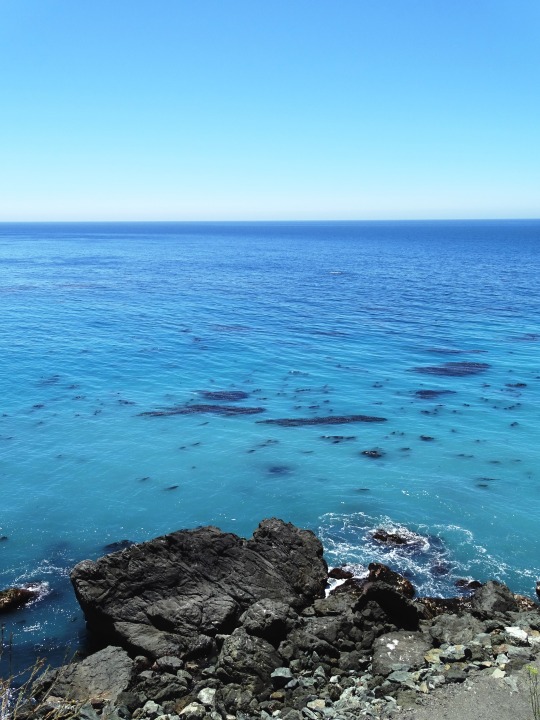
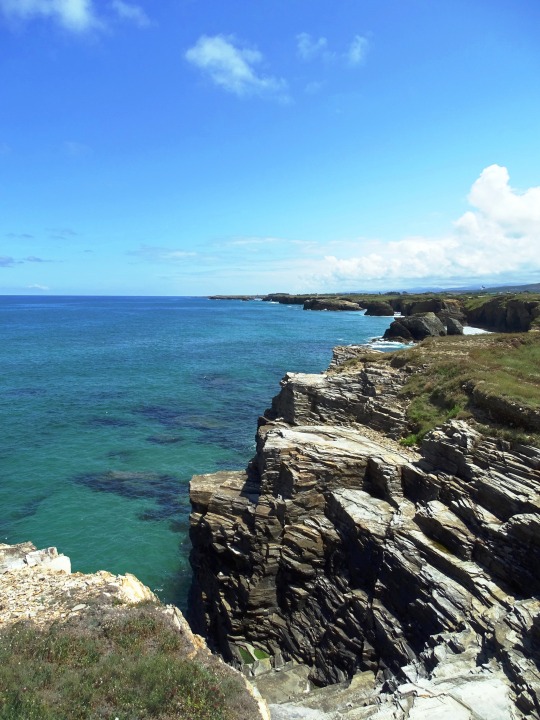
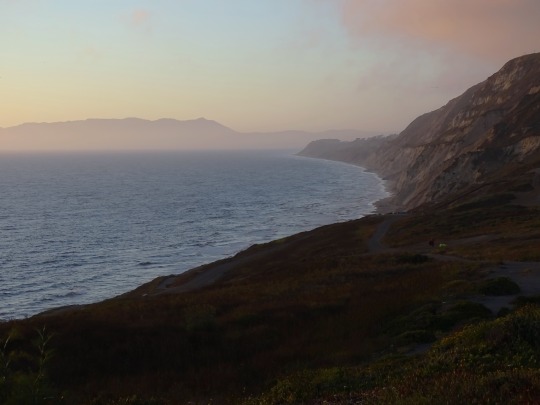
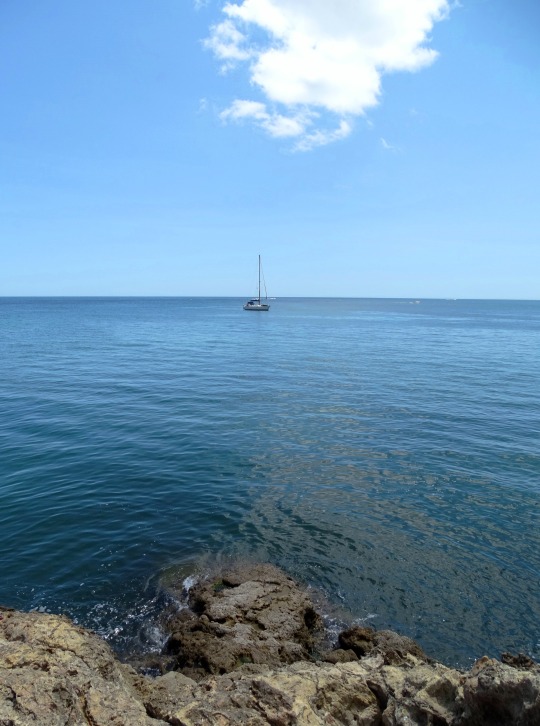
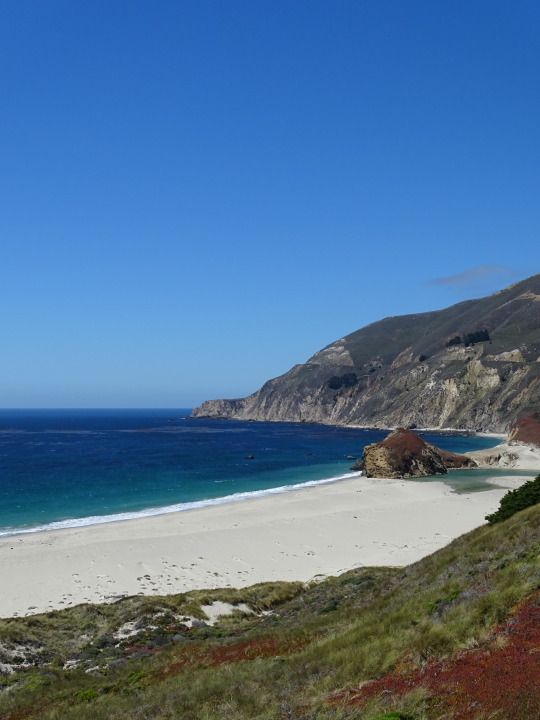
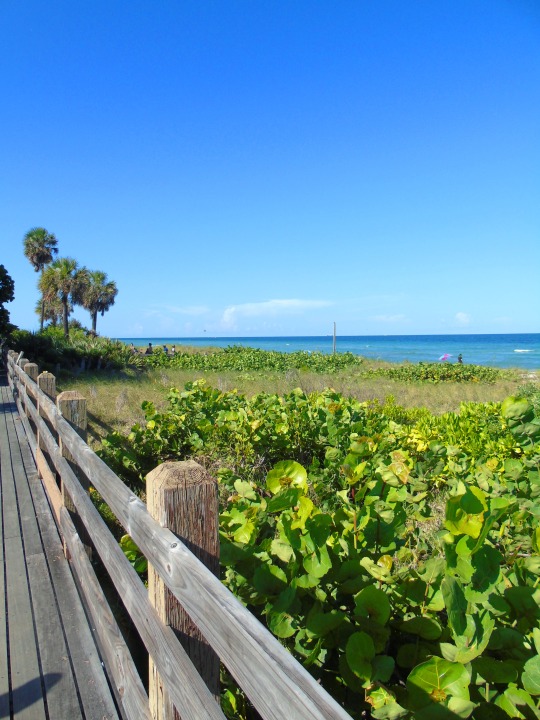

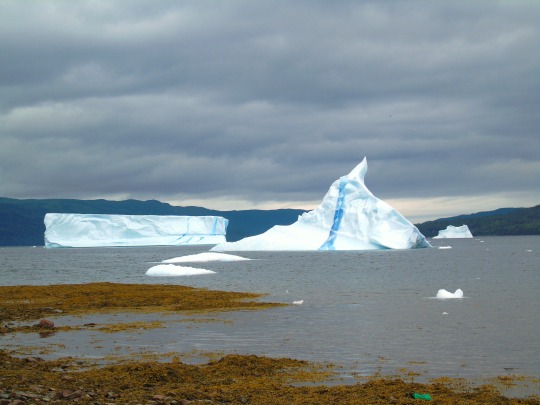
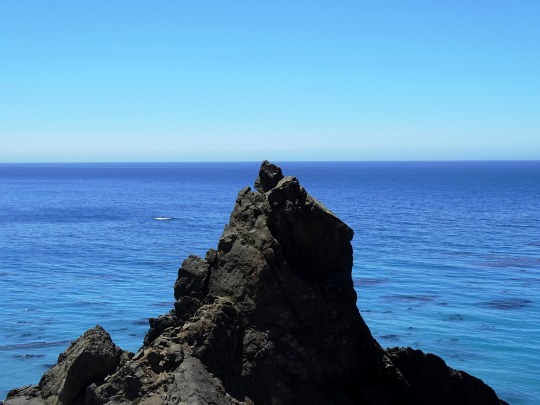

World Oceans Day
With oceans making up 66% of our Earth, it’s crucial we raise awareness about and tackle the threats facing these life-giving and life-containing bodies of water.
66% of the world is covered in a blanket of rich, vibrant blue, from its depths once came all life on the Earth, and it continues to house an immense amount of life. This blanket is the world’s oceans, and they serve as one of the most popular vacation spots in the world and play a vital role in the economy of countries worldwide. Across the briny deep massive amounts of cargo cross each year, and it still serves as the primary thoroughfare for trade. World Oceans Day celebrates the ocean and the important role it plays in our lives.
It’s a time for supporters of the oceans to focus on conversation and sustainability so that they can remain clean and usable. The animals deserve a happy and safe place to roam and live without having to worry about any destruction or man-made obstacles. It’s important to safeguard the oceans to help ensure a healthy home for all. One this day, people can come together to create a space for all to enjoy and appreciate, no matter where each person lives.
History of World Oceans Day
In 2008, the UN gathered and uniformly created World Oceans Day. It was first proposed in 1992 in Rio de Janeiro during the Earth Summit. The ocean has been an incredibly important part of human history, and this special was established with the intent of celebrating our connection to the sea and raising awareness about the various dangers it faces. There are nearly 200,000 identified species that live in the ocean, but the number of actual species that reside there is likely in the millions. It’s essential to ensure that they don’t have to worry about freely getting around and enjoying a healthy and safe home to reside.
Even with that being the case, there are still problems with overfishing, and the subsidies that are given for fishing in countries all around the world are causing depletion of the game species. These activities have led to efforts to restore the fishing industry being undermined, and the industry bringing in $50 billion a year less. It’s just one of the many factors that should have us all celebrating World Oceans Day and raising awareness about all the issues our big blue’s face.
There’s a global environmental catastrophe due to decades of overuse and a surge in single-use plastics. Plastic straws and bags are getting into the oceans and causing havoc. World Oceans Day is an opportunity to acknowledge and recognize the efforts that have been and are being made against plastic pollution. It’s enlightening and disheartening to know that today, 13,000,000 tons of plastic leaks into the ocean every year, which among other damage, kill 100,000 marine animals annually.
World Oceans Day Timeline
1987 Brundtland Report
This report, connected to The World Commission on Environment and Development (Brundtland Commission) notes that the ocean sector is lacking representation compared to other sectors.
1992 Earth Summit in Rio de Janeiro
Created as a way to celebrate the world’s shared ocean and raise awareness for the personal connection between humans and the ocean. This is where the concept for World Oceans Day was first proposed by the Canadian representatives.
2008 UN declares to recognize World Oceans Day
This year, after a four-year onsite and online petition drive, the UN General Assembly passes a Declaration that will officially recognize the day, beginning the following year.
2009 First World Oceans Day is celebrated
The inaugural World Oceans Day is observed with the theme “Our Oceans, Our Responsibilities.”
2016 World Oceans Day Youth Advisory Council is launched
Made up of 25 youth from all over the world, the Youth Advisory Council is created to develop and promote World Oceans Day.
Why celebrate World Oceans Day?
It’s a good reminder to bring attention to the fact that oceans play a major role in everyday life all around the globe. The oceans provide a majority of the oxygen we breathe, so many consider them to be the lungs of our planet. The goal is to develop a worldwide movement of citizens to care better for the oceans. It’s an opportunity to inform and educate humans and the public of what our actions are doing to the ocean and what impact they have in the long run. It’s not only a day to celebrate the beauty, wealth, and promise of the ocean, but a chance to realize that they’re a critical part of the biosphere. They’re a significant source of food and medicines and simply can’t be ignored or mistreated any longer.
How to celebrate World Oceans Day
Start it off by a visit to the nearest ocean to restore a personal connection to the sea. Breathe deep and appreciate the beauty and serenity the ocean offers each day of the week. Invite family along, and while there, bring information about the ocean and what people really need to know about it to make visiting it a joy for years to come.
Pick a day to go to the ocean to clean up and help restore it instead of simply sitting by it. Gather friends and family and pitch in and pick up trash that surrounds the local beaches and oceans in the area. It’ll not only look nicer, but the wildlife in the area will benefit from these actions as well. Avoid single-use plastics, and instead pack a picnic lunch with reusable containers to enjoy after the hard work is complete. One may also consider organizing a fundraiser to aid preservation and restoration efforts at the local beach. With all the plastic waste coming off our beaches thanks to careless beach-goers, our ocean is awash with litter.
Use this as a time to increase one’s knowledge and explore the topic further. There are a variety of books and resources out there to help a person achieve this goal. Another idea is to gather a group of people and watch an ocean film on the topic to bring awareness to the concept of helping out the oceans.
There are plenty of activities and events that occur on World Oceans Day. Celebrate by choosing one or two to participate in and enjoy. Engage in the day’s events by piggybacking off of other ideas that people in the area have come up with instead of having to think of activities alone.
World Oceans Day FAQs
When is World Oceans Day?
World Oceans Day has taken place on June 8 every year since 2009, with the inaugural theme of Our Oceans, Our Responsibilities.
What is the importance of World Oceans Day?
The purpose of this day is to develop a worldwide movement of citizens for the ocean while mobilizing people and raising awareness.
What is the World Oceans Day theme?
Each year, the theme for World Oceans Day changes, with past themes including Oceans & People, Healthy Oceans–Healthy Planet, Our Oceans–Our Future, and Innovation for a Sustainable Ocean.
Who started World Oceans Day?
World Oceans Day was first suggested by Canada in 1992 at the Earth Summit in Rio. After years of petitions, the UN officially recognizes the day.
How to help with World Oceans Day?
This day can be observed by getting involved in education, reducing carbon footprints, minimizing the use of plastic and making sustainable seafood choices.
Source
#Mussel Rock Park#Morro Rock State Preserve#Morro Bay#Pacific Ocean#Big Sur#California#West Coast#Atlantic Ocean#As Catedrais Beach#Spain#Albufeira#Portugal#Miami Beach#Acadia National Park#iceberg#Green Bay#King's Point#Newfoundland#Canada#seascape#landscape#cityscape#travel#vacation#World Oceans Day#WorldOceansDay#8 June#Maine#Florida#East Coast
2 notes
·
View notes
Text
Fiinovation Sustainable Development Videos
Fiinovation ensures simplicity and transparency while working on sustainability reporting. It has four elements i.e. Prepare, Connect, Define and Monitor.
Sustainable development has been defined in many ways, but the most frequently quoted definition is from Our Common Future, also known as the Brundtland Report.
More Visit us :
Fiinovation okhla ,
Fiinovation Delhi ,
Fiinovation address ,
Fiinovation Photos ,
Fiinovation Client Login ,
Fiinovation CEO ,
Fiinovation CSR ,
Fiinovation Glassdoor ,
Fiinovation reviews ,
Fiinovation employee reviews ,
Fiinovation Job ,
Fiinovation Careers ,
Fiinovation Leadership ,
Fiinovation NGO Funding ,
Fiinovation Linkedin ,
Fiinovation Salary
#csr#csr initiatives#corporate social responsibility#fiinovation csr#fiinovation#business#reviews#fiinovation reviews#finance#fiinovation linkedin#fiinovation jobs#fiinovation okhla#fiinovation okhla address#fiinovation ngo funding company#fiinovation salary#fiinovation leadership#fiinovation delhi address#fiinovation photos
0 notes